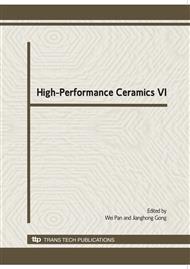p.417
p.420
p.423
p.426
p.429
p.434
p.438
p.442
p.446
Enhanced Brightness and Efficiency in Single-Layer White Polymer Light-Emitting Diodes (PLEDs)
Abstract:
In this paper, the improvements in luminance and efficiency have been demonstrated in a white polymer light-emitting device (PLED) with the structure of ITO/ poly (N-vinylcarbazole) (PVK): 1,1,4,4- tetraphenyl-1,3-butadiene (TPB):5,6,11,12-tetrapheny lanpthacene (rubrene) /LiF(1 nm)/Ca(10 nm)/Al(100 nm). The luminance of the white PLED is up to 4940 cd/m2 at 17 V. The current efficiency and Commission Internationale d’Eclairage (CIE) coordinates is 1.66 cd/A and (0.325, 0.326), respectively. The enhancement of the luminance and efficiency can be attributed to an improved hole-injection ability and balance carrier recombination through two ways: (1) enhancing the hole-injection from ITO by using O2 plasma treatment, and (2) balance the recombination of hole and electron by produce a buffer layer with σ-bonded segments of polymer between the ITO and the polymer layer. Besides, orange-emitting rubrene provides that direct recombination of holes and electrons occurred on the dopant molecules and trapping significantly enhanced the luminance and efficiency.
Info:
Periodical:
Pages:
429-433
Citation:
Online since:
March 2010
Price:
Сopyright:
© 2010 Trans Tech Publications Ltd. All Rights Reserved
Share:
Citation:


